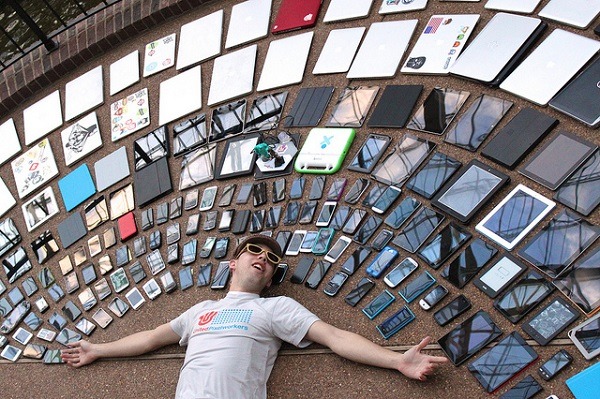How to use mobile as a bridge between digital and physical
The evolution of mobile tech is closing the gap between digital and tangible planes. How can marketers use these advances to facilitate the customer journey and drive sales?
The evolution of mobile tech is closing the gap between digital and tangible planes. How can marketers use these advances to facilitate the customer journey and drive sales?
Consumers navigate the online and offline worlds on their own terms before making a purchase.
The exact path to purchase varies greatly depending on product type, and it’s highly individual as well. Generally an average consumer uses a few different devices – desktop, laptop, mobile phones, tablets, TV, or even wearables – to research a product or service.

Many stop by a store to experience the product during the purchase journey, regardless of where the ultimate purchase is made. For a brand, knowing when and where to reach out to a consumer takes tact and tech – and mobile’s capabilities are greatly facilitating that.
Because of their ubiquity and their presence with the user wherever they happen to be, mobile devices have become a key tool in a marketer’s toolbox. They are often used as the medium to reach users when they are near a physical store, or to direct messages to user segments inferred from locations and times.
In addition to being used to maximize the relevance of advertising messages, mobile location data is also being used more often for the sake of measurement and attribution.
The IAB Mobile Center of Excellence released a white paper earlier this year called Marketing ROI and Location Data, which explained how to use mobile location data to measure store foot-traffic lift resulting from exposure to an advertising campaign.

Naturally, this capability can be used to attribute a store visit to mobile or digital out-of-home advertising campaigns. The rise of cross-device targeting and measurement solutions makes it possible to measure changes in-store traffic based on seeing PC or TV ads too.
Mobile is the bridge between online media and the offline world. Prior to mobile, tracking foot-traffic lift from TV or desktop commercials was based on instinct, surveys, coupon redemptions, or other imprecise means. When married with cross-device capabilities, mobile location will transform the measurement of store visits resulting from all forms of advertising.
Measuring store visits is gaining traction as a new KPI among many kinds of marketers. Therefore, it is important for publishers to understand how store traffic measurement via mobile location works. Publishers also must allow marketers to evaluate performance using store visit as a KPI, otherwise they could deter marketers from working with them.
The topic of measurement and attribution is only one of many that arise from the ways mobile relates to the physical world. The IAB’s recently launched its Mobile-to-Offline Working Group which provides insight for both the sell and buy sides of what’s commonly called “shopper marketing” – a shopper’s experience with a brand before, during, and after they actually make a purchase.
Some brands already embrace this concept. For instance, Walt Disney Parks and Resorts operates under the philosophy that the Disney experience starts the moment a customer begins to think about taking a Disney vacation.
This is best exemplified through the functionality of the My Disney Experience app, which allows vacationers to organize detailed itineraries prior to their trip and make all necessary adjustments to their plans in real-time while at the park.

We know the consumer journey doesn’t stop once the transaction happens. Advertisers can use mobile to add more value for consumers so as to create better customer experiences and deeper customer relationships.
Taco Bell’s mobile app exemplifies mobile-to-offline at its best. The app not only allows customers to order on-the-go prior to picking up in-store, it also uses mobile location data to determine when the customer is approaching the store. Thus, they are able to start preparing the order in a timely fashion to ensure that the order is fresh, hot, and right on time.

Customers’ smartphones and other mobile devices are like extra sales assistants that can make shopping more efficient and personal. Other brands – from vast coffee empires to mom-and-pop bookstores – can greatly benefit from thinking more holistically about how customers encounter them from the moment of first consideration through purchase and loyalty.
Yet, executing on that tactically is still very new. Big questions still remain around:
Homepage and article images via Flickr.